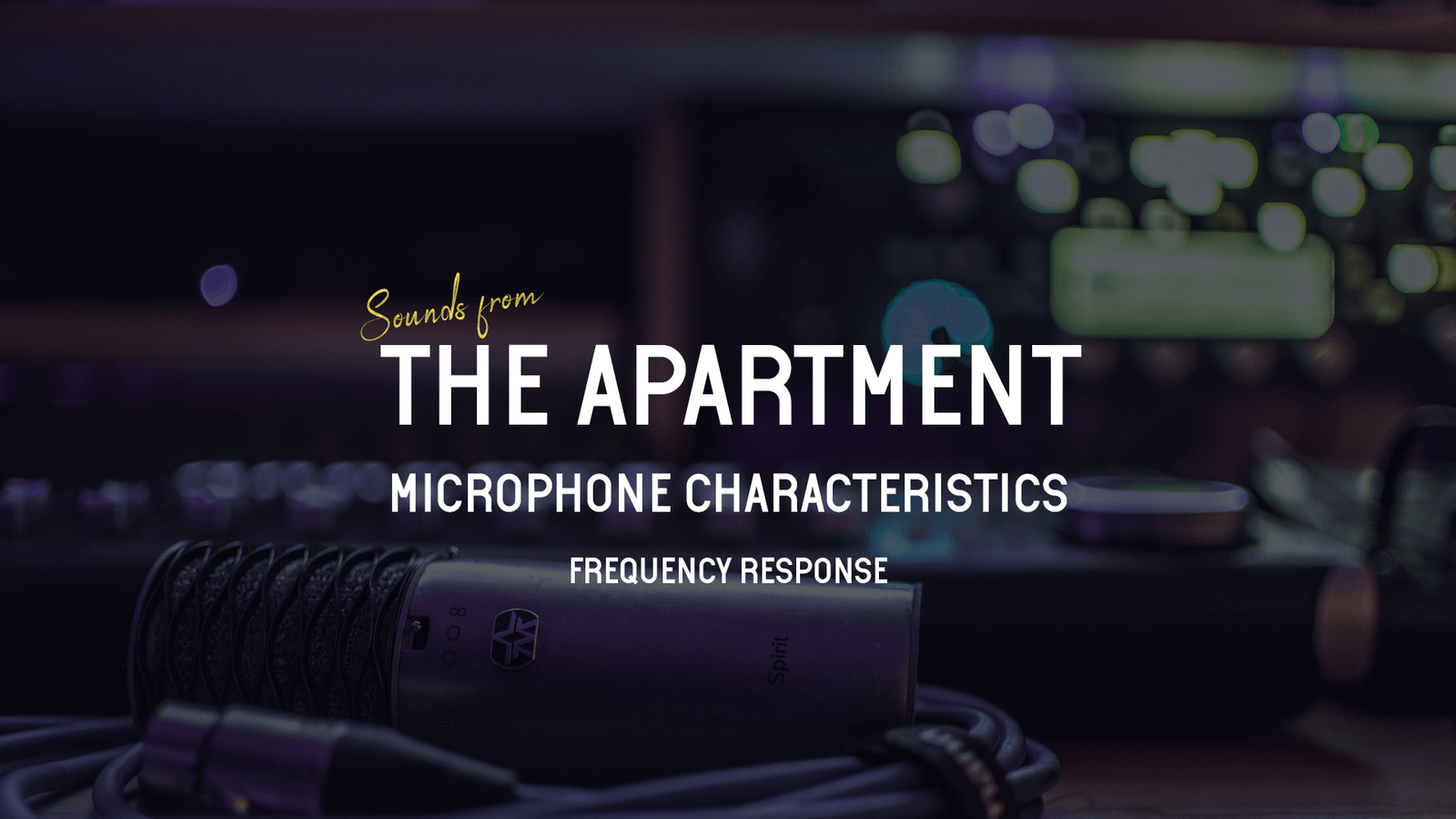Hey there! Moving further in Microphone Characteristics, after Polar Patterns and Proximity Effect, we will discuss about the most well known characteristic of any microphone. Frequency Response.
Before we start diving into what the Frequency response is of a microphone, I’d mention that I own Aston‘s Spirit condenser microphone and I am super happy about it, and since it is a multi-pattern microphone, it’s Frequency Response charts will help us understand even how different the same microphone can sound. Let’s go!
Frequency Response, what is it?
Every microphone has a specific output when converts the acoustic pressure to electrical signal so we can use in our recording. Based on all of its characteristics, that output might affect specific frequencies in volume, this way making the microphone behave unequally to some of the frequencies it can output. That is not a bad thing, at though, it only helps us pick the correct microphone for the use we want it. These are called Shaped Response Microphones.
You can also find Flat Response Microphones in the market that perform equally on every frequency. These microphones will provide a more accurate and natural recording of our source, but that is not what we always want.
Below you can see how the Frequency Response chart looks like for the Aston Spirit when it’s using the Omnidirectional pattern. Usually these charts extend from 20Hz to 20KHz but on this occasion they are showing the response from 50Hz to 20KHz. I think this is due to the fact that the Spirit won’t capture frequencies below 50Hz (as depicted on all 3 charts) and therefore there was no need for them to be included.
So from the below chart we can see more specifically how the microphone behaves when receiving a sound in Omnidirectional mode. It tells us the the microphone starts being sensitive at about 57Hz at -20db and becomes more sensitive, exponentially, hitting 0db at 90Hz. After that we can see a bump that goes up to 3db at around 150Hz and goes back to 0 at around 300Hz. Then it’s pretty much flat till about 3.9KHz where we observe a drop for about 2db, only to hit 0db again at 7Khz and then immediately see a boost for about 8db that peaks between 10 and 11Khz till it rolls off at +3db when hitting 20Khz.
From all this we can tell that the microphone will exaggerate the low frequencies a bit, and the higher ones a bit more. By looking at the Polar Pattern chart attached below the Frequency Response chart, we can more specifically identify the microphones sensitivity from each direction at 1Khz.
If we switch the microphone to its Bidirectional (Figure of 8) Polar Pattern, we get the below Frequency Response. which as you can see, it’s quite different to the previous one.
The boost at the low frequencies is now gone, and the response is smoother and less intense at the top one which allows this mode to be closer to a Flat Response, although not entirely flat.
Like with the Omnidirectional Pattern, with the Birectional, we can see the sensitivity in this pattern when it receives a sine wave of 16Khz.
Moving to the final Frequency Response chart, the Cardioid, we can see an even flatter response when comparing to the previous two patterns. Similarly like the Bidirectional Polar Pattern, the low boost is not there, and clearly the response is quite different to the higher frequencies as there are not that intense boosts this time and even a drop in between them that brings the frequency response quite close to 0db.
Moving further down, by observing the Polar Pattern diagram, we can also observe how sensitive the microphone is to specific frequencies from each direction.
To conclude, you will find that microphones that are designed for studio use tend to have a more balanced Frequency Response and their “presence rise” – this is how these bumps on the high frequencies we were looking at earlier are called – are much more subtle than microphones designed for live use.
Don’t forget that the best judge is your ears. Frequency Response charts can give you a good idea of how a microphone can sound but in the end, what matters is how it sounds to you and how you are going to use it!
There you have it! Mission Frequency Response: Complete!
Tips on how you can manage your home studio in a better way, right here!
Subscribe to our YouTube channel, Instagram and Facebook pages to get access to more of our content!
See ya!




